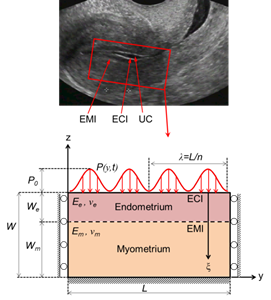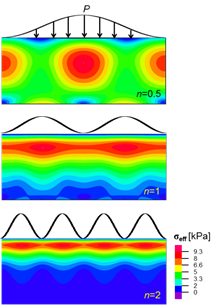Adenomyosis and endometriosis are pathological states of the uterus in which endometrial tissue appears either in the uterine myometrium or outside of the uterus. Endometriosis is a common cause of chronic pelvic pain and has a detrimental effect on the quality of life for women who are affected with the condition. These pathologies of the uterus are common among women of reproductive age and may cause pelvic pain, bleeding disorders and infertility. The endometrial-myometrial interface (EMI), which is known as the uterine junctional zone, does not have a separating layer as in similar biological junctions, and thus, the endometrial glands are in direct contact with the myometrium. This zone has emerged in recent years as an important location that critically governs important reproductive functions such as uterine peristalsis, as well as development of pathological conditions such as endometriosis. One of the recent hypotheses for the etiology of endometriosis and adenomyosis is the tissue injury and repair (TIAR) theory, which suggested that uterine hyperperistalsis (i.e., increased peristalsis) during early periods of reproductive life induce injury of endometrial cells at the EMI region that lead to a chain of biological alterations (Leyendecker et al., 2009). Recently, we employed a computational model that proofed the occurrence of high stress concentrations in the region of the uterine EMI during uterine hyperperistalsis. Naturally, these facts set forward the need for comprehensive experiments under controlled laboratory conditions in order to explore the mechanobiology of the EMI region due to physical perturbations that mimic hyperperistalsis. For this purpose it is required to develop viable in vitro models of the endometrial-myometrial interface and experimental setups with special test chambers for mimicking the physical loads due to uterine peristalsis.
 |  |

